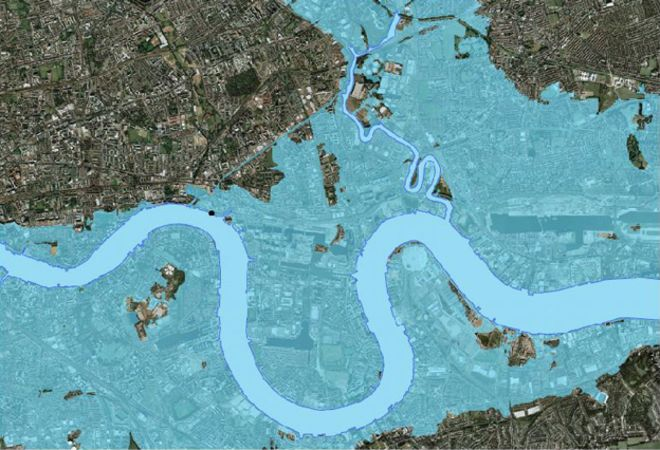Madam Prime Minister, Her Majesty's Corps of Engineers have submitted their final report concerning the Dorney Lake Expansion Project
Madam Prime Minister, Her Majesty's Corps of Engineers has researched all aspects of modern dam construction and consulted with their peers in the field throughout the Commonwealth and throughout the world. They assure us that the dam will withstand all Acts of God including, as Sir @JDunlop clarifies, hundred-year rainstorms and, by extension, hundred-year snow storms. As you may remember, the Thames last froze over in 1963 and snowfall exceeding 30cm (12 inches) is quite rare. We must look back nearly a century to exceed this amount and the marvelous depths of 12 m (40 ft) snow drifts in the 1800s are, we're certain, exaggerated. We are confident that a thousand-year storm would be required to breach the dam or exceed the capacity of planned run-off.
We respect that overflow from rivers draining areas not naturally draining into the Thames basin are possible, but given the geography of England, that appears quite unlikely — but the Corps continues to monitor water flow throughout the nation. It is this monitoring, along with modern (nearly instantaneous) communication that would make a natural breach not conversant with a thousand-year storm highly unlikely.
Likewise, the Caversham Lakes could experience a catastrophic release of water, but the Corps has analyzed the seven locks that exist between the Caversham Lakes and Dorney Lake and feel they can moderate the flow well enough to not substantially threaten London. However, they admit that if the older Caversham Lakes dikes1 could be overwhelmed by substantial rain, perhaps even less than a thousand-year storm.
The Corps is less confident in the face of global terrorism or even homeland malfeasance. There are canals throughout Britain's farmland and those canals, as robust as they are, are often merely earthen dikes that allow the passage of everything from irrigation water to small shipping. Such dikes are obviously susceptible to sabotage, even in the lowest forms such as by individuals or groups seeking access to unmetered water sources. Although highly unlikely, it is theoretically possible that such a tap in one of the larger canals could, eventually, result in erosion that would compromise the structure of the dike — releasing the contents of the canal and potentially threatening the Dorney Lake Expansion. The Corps assures us that it biannual review of the canals is sufficient to defend against such threats.
Finally, Madam Prime Minister, the Corps would like to bring to your attention their continued distrust over the Portishead Advanced Water Desalination and Reclamation Center, which is nearing completion. As you may recall, this center is designed to employ sub-fission molecular separation techniques designed to provide sufficient potable, non-potable, and irrigation water for the entirety of the South West Region of England. The Corps renews its objections to completing and commissioning this center without the recommended tests and inspections outlined in Chapter 37, Part II, Volume 6, of document XN-3447-H, Concerning the Experimental Nature of the Portishead Advanced Water Desalination and Reclamation Center and the Plausible Outcome of a Critical Mass Chain Reaction Resulting in Catastrophic Water Production.
Madam Prime Minister, in a nutshell, should the plant's controls systems be compromised, the result would be water production in the Upper Thames Watershed that could result in substantial flooding of London with no recourse but to demolition of the facility, threatening radioactive exposure to the peoples of Avonmouth and Bristol. Though highly improbable, such a catastrophe would redefine the Thames waterway and cause untold billions of pounds in damage and considerable loss of life.
Thank you, Madam Prime Minister, for receiving this report. As always, your humble servant....
1 If there are any such dikes. I don't actually know. Fiction's a great thing, right?

